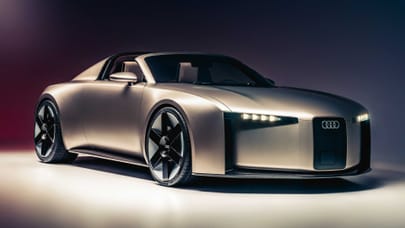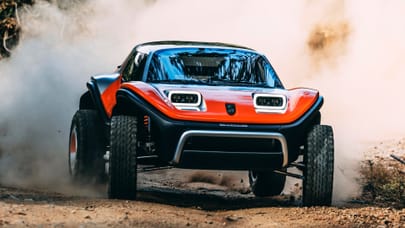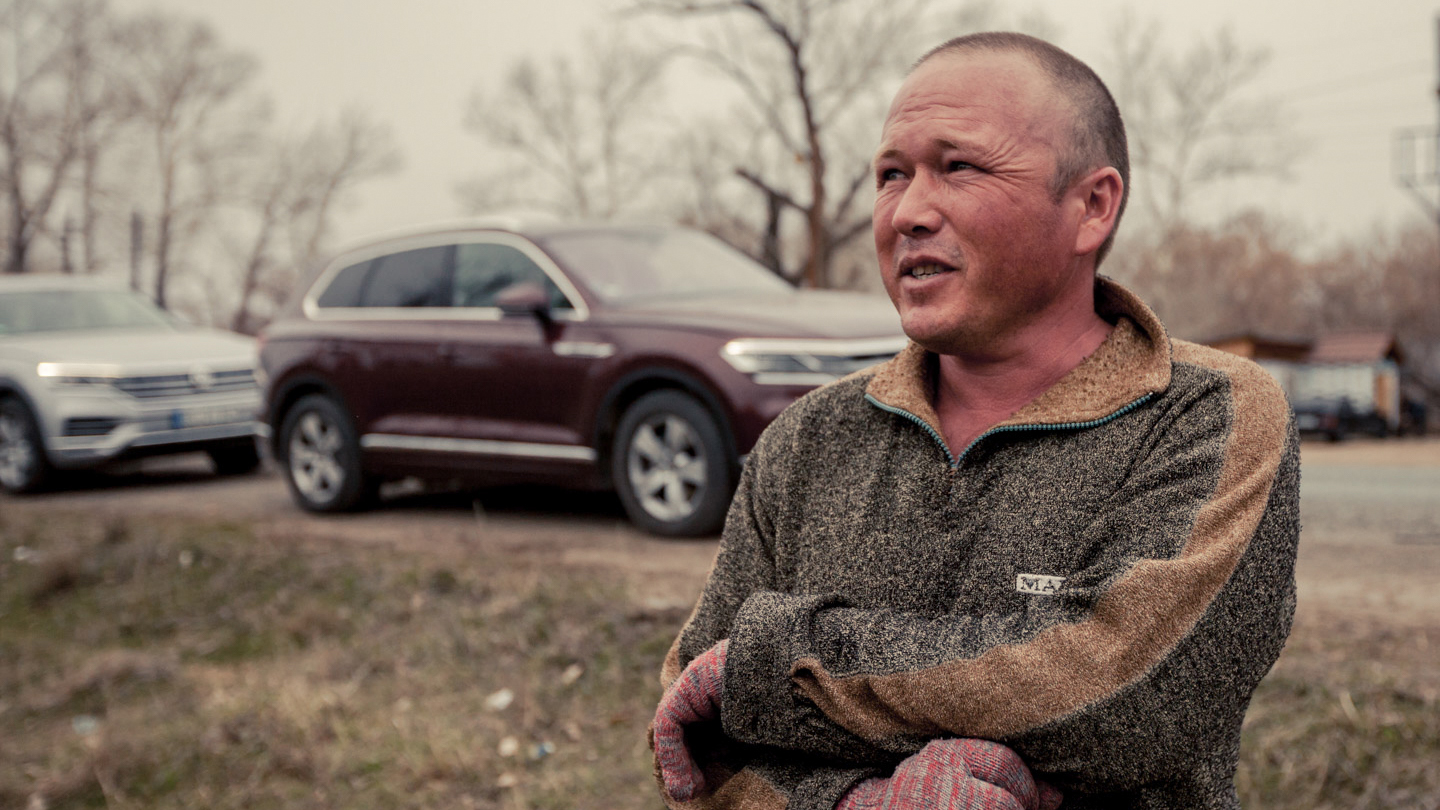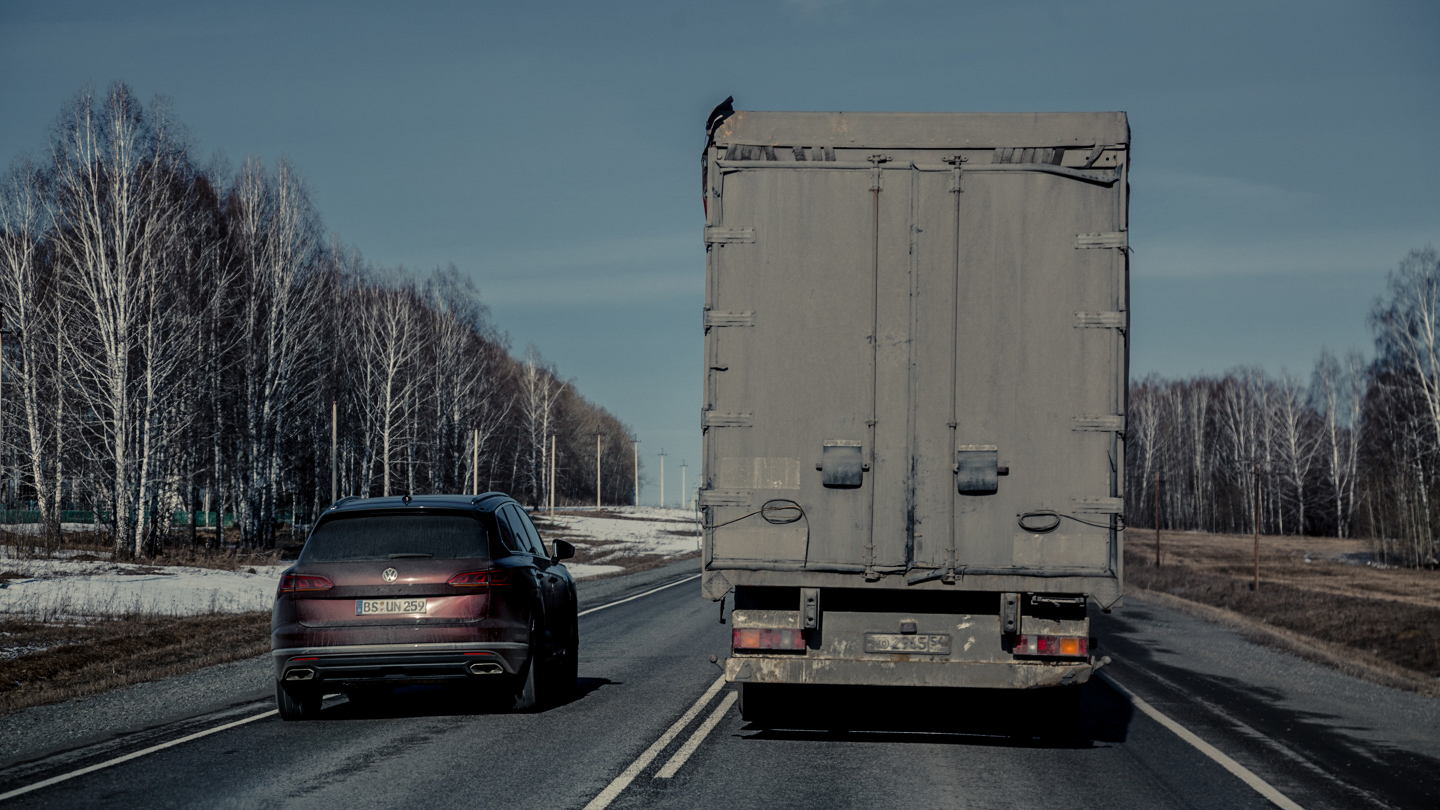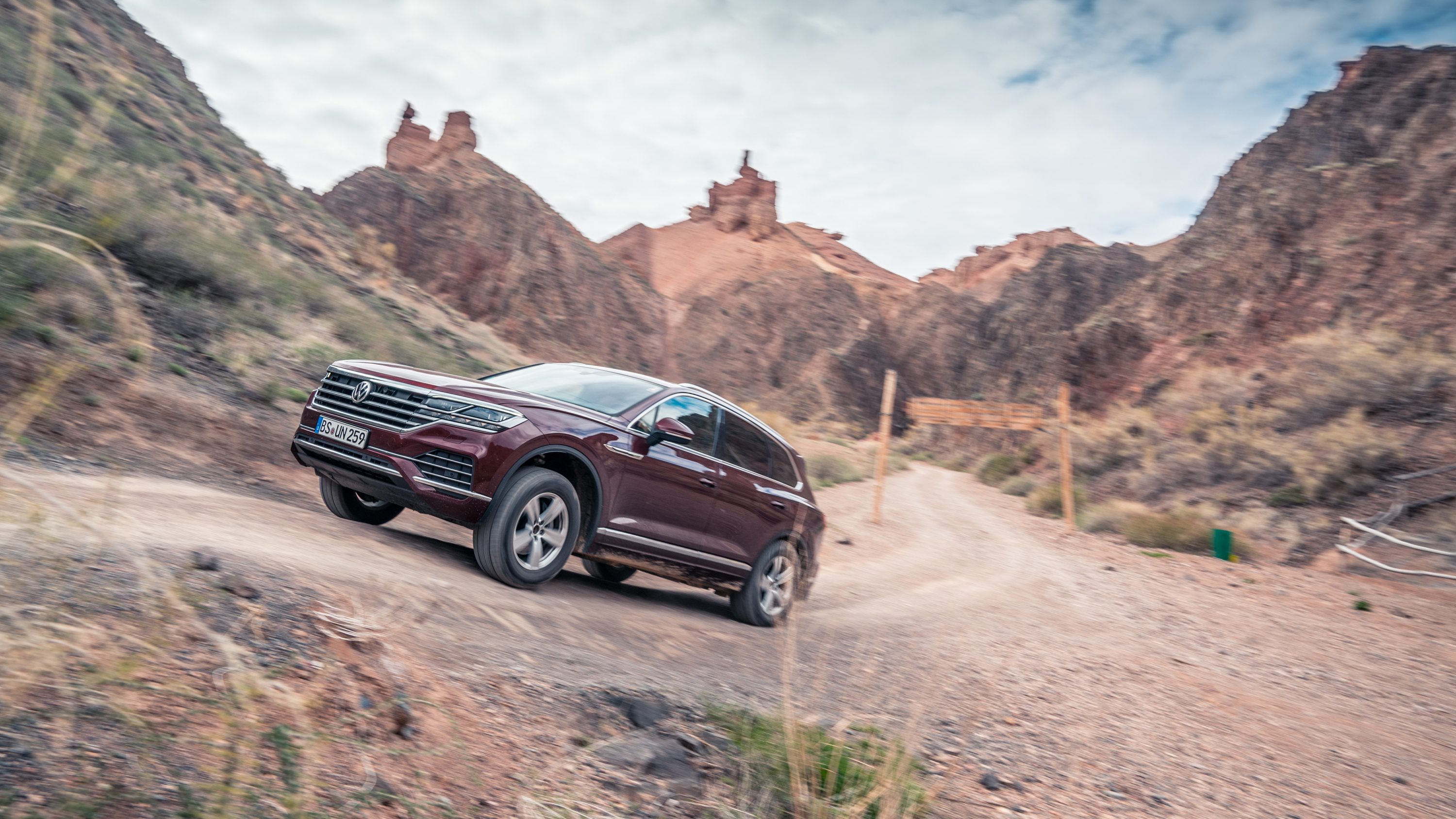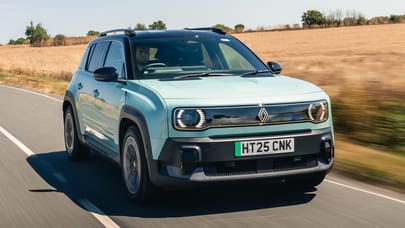
Crossing Kazakhstan in the new VW Touareg
We do a stint in VW’s new flagship as it crosses the world on an epic road trip
“Are we nearly there yet?”. A seemingly innocent phrase, yet five words that instantly mutate into verbal kryptonite when spurted from the passenger seat on a long journey.
Even so, I can’t help but blurt it out as a sort of ice-breaker. Being just three miles into a tiny stint of an epic 10,000-mile road trip with someone I only met five minutes ago, this could be a mistake.
Words: Rowan Horncastle / Photography: Rowan Horncastle & VW
I’m riding shotgun through the cold, Soviet tones of early morning Almaty, Kazakhstan. Pinned upright behind the wheel (thanks to some osteopathic foam bolsters) is Rainer Zietlow. Wrapped in a thick layer of Gortex, he’s garnished with a grizzly salt and pepper beard while carrying two weeks’ worth of cross-continent exhaustion under his eyes. Luckily, this isn’t his first five-digit road trip.
Rainer is an addict. A driving addict. A rare breed of German addicted to driving very, very long distances. So much so, for the last decade, he’s spent a third of the year – every year – away from his family and friends competitively driving around the planet, ticking off 114 countries in the process. It doesn’t matter if it’s up, down, across or round and round, he’s trekked every which way he can to try and get another stamp in his passport and a Guinness World Record.
It started in 1988, six weeks after getting his driving licence when he drove through Algeria as a student. Two years later, he took a Land Cruiser across Africa before embarking on his first round-the-world tour aged 25 in a UK-registered Landie 110. Wanting more, he then approached sponsors and took his long-distance drives into the commercial realm.
With financial support, he’s gone on to set a world altitude record, driven around the world on natural gas, set Carrera Panamericana records, driven from Melbourne to St Petersburg in 17-and-a-bit days, from Moscow across the brutal, unforgiving wilderness and 27-metre snowbanks to Kamchatka (in 60 days) and from Norway to South Africa and back.
In fact, he’s so good at driving a bloody long way, he set up a business using his years of experience. One that is called upon by manufacturers to show off the endurance capabilities of its latest products.
That’s why I’ve ended up in a recently unveiled Touraeg. One currently engulfed by the gloominess of Almaty. See, two weeks ago, the multiple world-record-holding German took VW’s new flagship SUV off the line in Bratislava and drove it – camouflaged – through eleven countries (Slovakia, Austria, Czech Republic, Poland, Lithuania, Latvia, Estonia, Russia, Kazakhstan, Mongolia and China, if you haven’t got Google Maps handy) to its world premiere in Beijing. Now he’s driving it back to VW’s factory in Wolfsburg.
Why? Well, this super schlep is working as a marketing exercise, inside a car launch, wrapped in a development drive. And as he’s on his way back, I thought I’d lend a hand with driving duties for the day.
But for a man so well-travelled, Rainer is not a raconteur. Desperate to tap into what I thought would be a well of anecdotes, jeopardy and near-death experiences, I quickly find it’s pretty dry. The most exciting tale was one of a crash in Tanzania, one that damaged the car so much it took 13 days to repair. But he’s never had to abort a trip. Never had a big mechanical breakdown. Cracked screens, punctures and fuel quality are his main concern.
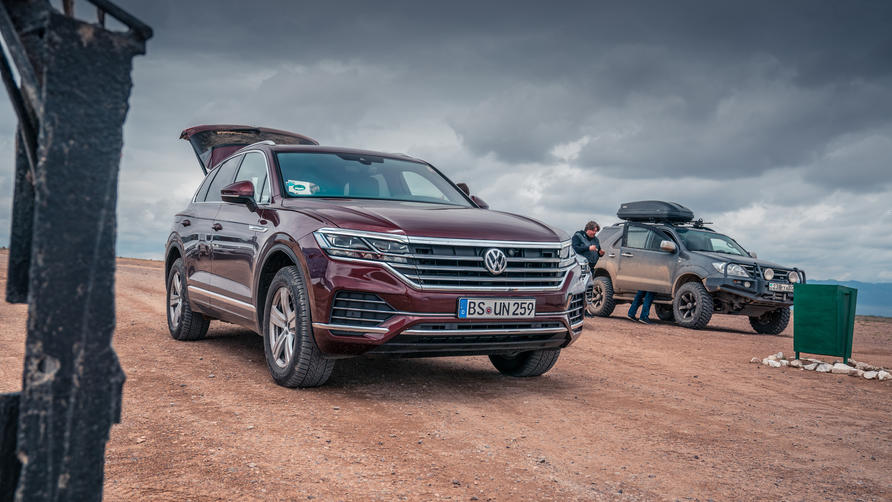
Rainer openly admits that he’s not in it for the travel, but the competition. He tends to travel in a team of three (himself, a photographer and videographer), with one car, no spares and no mechanical knowledge. “I’m a marketer, not a mechanic,” he states. He’s also got a bizarre pseudo rock ‘n’ roll rider. Every night, he’s militant and Germanic with his food order: Greek salad to start, steak for main, strudel for dessert. It’s the same every night, wherever he is – indifferent of culture of situation. I, on the other hand, dip straight into Kazahkstan’s succulent national delicacy: horse meat.
Top Gear
Newsletter
Thank you for subscribing to our newsletter. Look out for your regular round-up of news, reviews and offers in your inbox.
Get all the latest news, reviews and exclusives, direct to your inbox.
But as I strap myself in behind the wheel for a day-long stint, Rainer looks nervous. And I’m not blaming him. I’m only here for a soupçon of his epic adventure and to get an early feel for the car. He, on the other hand, has got to traipse back to Germany on a tight deadline with no support and the weight of a hefty marketing campaign on his broad shoulders.
Our destination for the day is the Charyn canyon – a gorge close to the Chinese border ploughed into the planet over millions of years. It’s meant to be spectacular. But first, a road trip essential: snacks. We pull over at a local market and a bag of bonbon-looking white balls is forced into my hands. They’re not bonbons. They’re sour, savoury balls of something. Possibly gone-off chalk. So I settle for some frisbee-shaped bread and sweets and hit the road.
And how the Touareg has grown: both physically and intellectually. It’s now 44mm wider and 77mm longer, but lower than its second-generation forebear. It’s also a proper tech powerhouse. Back in 2003, when the first Touareg was launched, it was the outrageously torquetastic V10 TDI that had everyone talking. This time it’s all about the gizmos. Inside has seen one of the biggest cabin overhauls from VW in decades, repositioning the Touareg entirely and bringing it ahead of its fiercest competitors.
Put simply, the Touareg is Volkswagen’s incredibly stylised answer to the Audi Q7, Porsche Cayenne, Mercedes GLE and BMW X5. Now, that’s a heavyweight battle if ever there was one. Built off the incredibly flexible ‘MLB Evo’ parts matrix, the Touareg uses the same architecture as the Q7 and Cayenne as well as the more exotic Bentley Bentayga and Lamborghini Urus. That means there’s aluminium suspension, a body that’s largely aluminium too, and a whole lot of other weight-saving in the powertrain, cooling, exhaust, electrics, seats, whatever.
Instantly the tech comes in handy. Negotiating the urban sprawl requires an extra percentage of brain capacity for us Brits. It’s the same cognitive recess reserved for places like Bombay, or Rome. But in Kazakhstan it’s the pedestrians you have to be careful of. They just go wherever the hell they want, whenever the hell they want while fully committed to their smartphone’s screen. If they want to cross a six-lane highway while reading something on their phone, they’ll do it. It’s weird. And the whole experience feels like you’re stuck in an episode of Black Mirror, one where your life is a first-person Russian dashcam compilation.
Luckily, the Touareg has thermal imaging cameras to scan and alert you of kamikaze pedestrians. But I’m fascinated by the faces. Being on the east, Almaty has extraordinary diversity, being closer to Mongolia, Kygystanian and China. Residing in the shadows of the mighty Tien Shan mountains, it’s Kazakhstan’s biggest, most developed, and most ethnically and culturally diverse city. One decimated by an earthquake in 1911 and stripped of its capital city status in 1997 for the more centralised Astana.
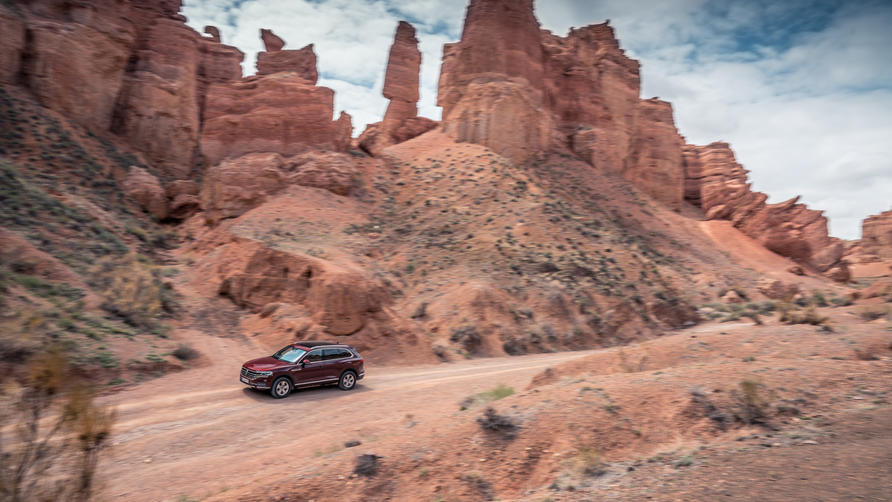
However, thanks to a certain British comedian’s depiction of a fictional Kazakh journalist by the name of Borat, the world’s perception of Kazakhstan is somewhat out of kilter. But after a morning negotiating the chaos that is Kazahkstan’s former capital’s rush hour, I am yet to see one bright green mankini. Or any mankini, for that matter.
Yet the planet’s largest landlocked country offers incredible terrain. We see snow, dust, rock and – surprisingly – incredibly well-paved motorway. You have the Chinese to thank for that. With such topographical variety, it’s the perfect place for the hammiest of ham-fisted Brits to test a new car for the day. Something that has Rainer’s left arm taken off safety, locked and loaded, ready to pounce on the wheel in case something goes awry. “It’s just psychological,” he says with a grin.
Unsurprisingly, like all the other large SUVs underpinned by the MLB architecture, the way VW has managed to hide the Touareg’s porky 1,995 kg kerb weight while on the move is pretty much Ouija board witchcraft. It’s thanks to the electro-mechanically 48V adjustable anti-roll bars working in conjunction with the active all-wheel-steering, which simultaneously levels out body roll while virtually taking a slice out of the wheelbase. These are complex and expensive ways to disguise over two tonnes of car, and you’re always aware of the forces they’re fighting, but they really work.
Reaching the rim of the Canyon, I have to stop to take in the incredible landscape. It’s a sort of honey-I-shrunk-the-Grand-Canyon; a more digestible version of awesome and natural splendour that borders on the sublime. The overpowering palette of reds, oranges and yellow sandstone, plus their amazing formations, forces your brain to do the whole spinning beach ball and buffer the situation as it ripples all the way to the horizon. But there’s an all-too-obvious dusty trail snaking perfectly through the framing of the high walls. I must find a way down and drive it.
Teetering the bumper over the edge, we jack the air suspension up, put it in its most rugged mode and feather the brake and let gravity take us down the face. The old Touareg competed in the Dakar, remember, so this one must have some sort of off-road prowess in its DNA, right?
But as it graunches and fumbles its way down, it’s clear the inclusion of all the new geeky tech and screens inside the cabin has comprised the new Touareg’s off-road ability. There’s still permanent all-wheel-drive and a centre diff-lock acting as the transfer box between the front and rear axles (sending 70 per cent of torque to the front wheels and up to 80 per cent to the rear) but there’s no rear locking diff, so as we scramble across rocks it unnecessarily spins its wheels on far from arduous off-road terrain. There are four off-road modes (Snow, Sand, Gravel and Expert) as part of the Off-Road pack, but they’re all just throttle, ECU and steering maps rather than bona fide go-anywhere hardware. Even so, we make it down and explore before stopping for food (salad, steak, strudel) before plodding on to the airport.
As I sit in the departure lounge having been in the country for less than 24 hours, I’ve not even made a pin-prick of a dent in the mileage of Rainer’s big adventure. But I have a new appreciation for the scale of his expeditions. As for the car, well I’m slightly mind blown at how the current crop of SUVs can make such a slog feel so sophisticated and comfortable.
Although Rainer hasn’t had it happen to him yet, if something goes wrong or an ECU gets dizzy and goes kaput in South Sudan or somewhere, it’ll be a lot harder to fix than an old Landie. But it’s never been less demanding to do big miles wherever you are in the world. So go out there and do a big drive. Untangle the knots in your brain and open your eyes to the world around you. Just be a bit more adventurous with the menu than salad, steak and strudel. And don’t say the fateful phrase ‘are we nearly there yet?’




